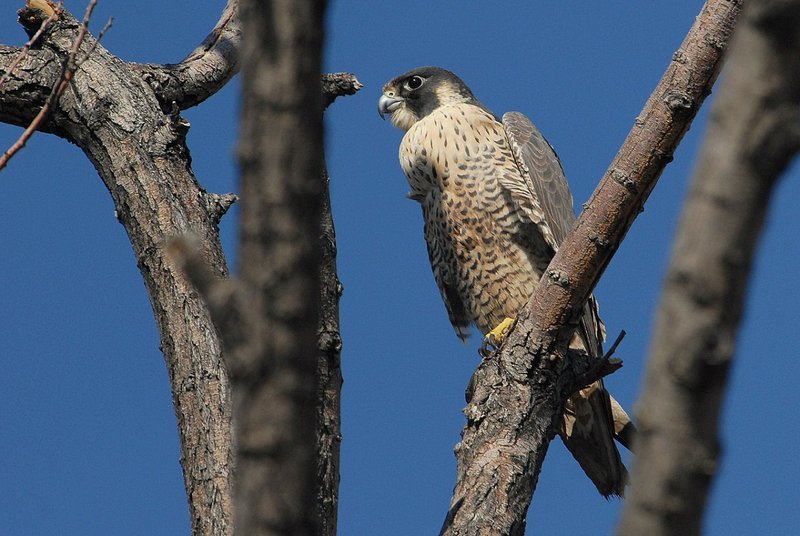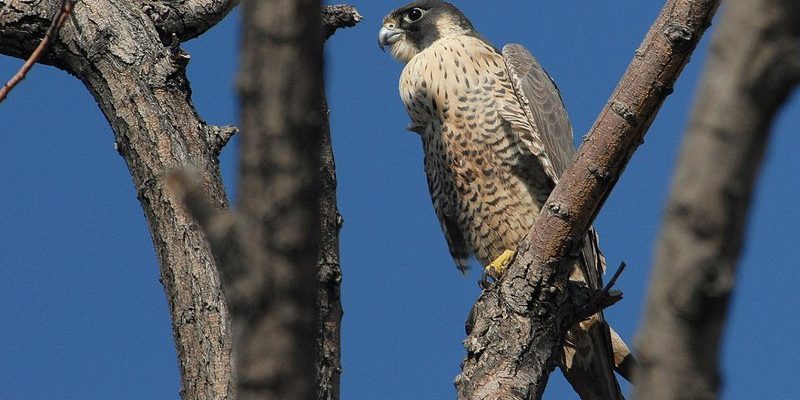
If you’ve ever wondered where to spot these fascinating raptors, you’re in for a treat. Today, we’ll explore their global habitats and ranges, helping you understand not just where they live, but how they thrive in these places. So, let’s take a closer look at some specific regions and what makes them suitable for falcons.
North America: A Diverse Playground
North America is home to several species of falcons, notably the Peregrine Falcon and American Kestrel. You might spot them in various places, from bustling cities to serene parks. The Peregrine Falcon, for instance, loves to nest on tall cliffs, but it has also adapted to urban settings by nesting on skyscrapers. Isn’t it interesting how these birds have adjusted to human environments?
American Kestrels are smaller and prefer open fields or grasslands with scattered trees. They hunt insects and small rodents, often perching on utility wires or fence posts. When wandering through a North American landscape, keep an eye on the skies or even look around for these vibrant, colorful birds.
Key Locations to Spot Falcons in North America
- National Parks: Parks like Yellowstone and Yosemite offer stunning natural habitats.
- Cities: Urban areas like New York City have seen rising populations of Peregrine Falcons.
- Grasslands: Places like the Great Plains are perfect for spotting American Kestrels.
South America: Highlands and Coastlines
In South America, you’ll find the Andean Falcon and the Prairie Falcon, creatures that thrive in the continent’s diverse ecosystems. The Andean Falcon prefers high-altitude regions, soaring above the clouds in the majestic Andes Mountains. They have a remarkable ability to hunt in rugged terrains, preying on small mammals and birds amidst steep cliffs.
On the other hand, the Prairie Falcon is more commonly seen in drier grasslands and open fields. Imagine watching one skillfully swoop down to catch its dinner while you’re hiking in the vast expanse of Patagonia! The contrast between its habitat and that of the Andean Falcon is fascinating, showcasing how various species of falcons adapt to different lifestyles.
Where to Look for South American Falcons
- Andes Mountains: These towering peaks are perfect for spotting Andean Falcons.
- Patagonian Grasslands: Ideal for Prairie Falcons hunting in open spaces.
- Coastlines: Falcon species are often seen near coastal areas, hunting for seabirds.
Europe: Urban and Rural Adaptations
Europe is a fascinating mix of urban and rural environments, which falcons have adapted to quite well. The Common Kestrel is a prime example of this adaptability. You’ll often find them hovering over fields or perched on lampposts in cities, scanning the ground for prey. Their ability to thrive in diverse settings makes them one of the most recognizable falcon species across the continent.
The Eurasian Hobby, on the other hand, is more partial to open woodlands and wetlands. These smaller falcons are agile fliers and love to chase insects mid-air. It’s truly a marvel to witness their hunting skills, especially during migration seasons when they become more visible.
Top Spots for Falcon Watching in Europe
- Urban Areas: Cities like London and Paris can be great for spotting Common Kestrels.
- Wooded Regions: Look for Eurasian Hobbies in open forests and wetlands.
- Coastal Cliffs: These are prime nesting sites for various falcon species.
Asia: Vast Landscapes and Varied Habitats
Asia boasts an incredible diversity of wildlife, and falcons are no exception. The Saker Falcon, known for its strength and size, is primarily found in Central Asia, often inhabiting steppes and grasslands. These falcons are not just beautiful; they play a crucial role in controlling populations of small mammals.
In contrast, the Lanner Falcon prefers more mountainous areas, often nesting on cliffs. Their striking appearance and hunting skills make them a delight to observe. If you’ve ever trekked in the Himalayas, you might be lucky enough to spot a Lanner soaring above the peaks.
Falcon Spotting Locations in Asia
- Central Asian Steppes: Ideal for Saker Falcons hunting in open fields.
- Mountain Ranges: Look for Lanner Falcons nesting on cliffs.
- Urban Areas: Some species have adapted well to urban settings.
Africa: From Deserts to Savannahs
Africa offers some unique habitats that are perfect for falcons. The Eleonora’s Falcon is known for its fascinating migratory behavior and preference for coastal cliffs and islands. These birds are crucial for maintaining the balance in their ecosystems, often preying on insects and small birds.
Then there’s the Red-necked Falcon, which favors open savannahs and can often be spotted hunting in flight. The sight of a falcon diving down to catch its prey is awe-inspiring and speaks to the beauty of nature.
Where to Spot Falcons in Africa
- Coastal Cliffs: Eleonora’s Falcons are commonly found in these regions.
- Savannahs: Look for Red-necked Falcons soaring over the open fields.
- National Parks: Parks such as Kruger are great for a variety of falcon species.
Spotting falcons around the world can be a thrilling and enriching experience. Whether you’re hiking through the mountains of South America or wandering urban parks in North America, these birds bring a bit of wild beauty to our everyday lives. By understanding their habitats and behaviors, you’ll not only enhance your birdwatching skills but also develop a greater appreciation for these magnificent creatures.
So next time you’re out and about, keep your eyes peeled for a falcon. You might just witness a breathtaking aerial display or catch a glimpse of one perched high above. Happy birdwatching!

